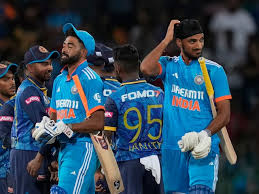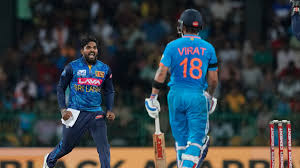
In a gripping encounter that ended in a dramatic tie, the first ODI between India and Sri Lanka, held at the Premadasa Stadium on August 2, 2024, has cast a shadow over the Indian cricket team’s recent performances. This match, which concluded in a nail-biting draw, highlighted some troubling signs for the Indian team, marking one of their slowest and lowest performances since their T20 International World Cup victory.
Sri Lanka set a challenging target of 230 runs for India. In response, Indian captain Rohit Sharma played a key role with a solid innings of 58 runs off 47 balls. Despite Sharma’s efforts, the team struggled to accelerate their scoring rate. Former captain Virat Kohli contributed a steady but slow 24 runs off 32 balls, and his innings, characterized by a lower strike rate, has been a focal point of criticism.
The tension reached its peak in the final overs when Arshdeep Singh, tasked with scoring just 1 run off 14 balls, was dismissed LBW (leg before wicket). This crucial dismissal proved pivotal, preventing India from chasing down the target and contributing to the overall sense of disappointment.
The drawn match, coming on the back of a series of lackluster performances, raises concerns about the current state of the Indian team’s morale and form. Post their T20 International World Cup triumph, the team had shown considerable promise, but recent matches have exposed vulnerabilities and inconsistent performances. The tie against Sri Lanka is seen as a setback, especially given the expectations following their World Cup success.
Team India’s performance in this ODI has been described as one of their slowest and lowest in recent memory, prompting debates about their preparation, strategy, and mental resilience. As the series continues, there will be a keen focus on how the team responds to this challenge and whether they can reinvigorate their form and confidence.
The second ODI promises to be crucial, not only for the series standings but also for the morale of the Indian team. Fans and analysts alike are hopeful that the team can bounce back and demonstrate the resilience and skill that have become their hallmark.

